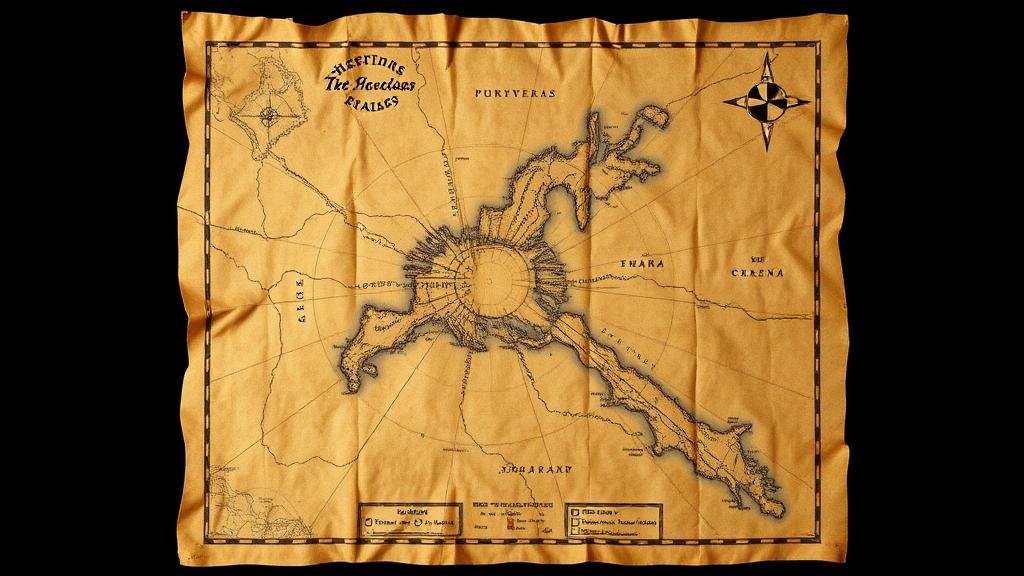Using AI to Analyze Historical Maps for Overlapping Clues to Treasure Locations
Using AI to Analyze Historical Maps for Overlapping Clues to Treasure Locations
The integration of artificial intelligence (AI) in the analysis of historical maps represents a transformative approach to the field of archaeology and treasure hunting. This article examines the methodologies and technologies employed to harness AI for uncovering potential treasure locations through the thematic analysis of historical cartography. By leveraging AIs capabilities in image recognition, data mining, and geographical mapping, researchers can uncover insights hidden within centuries-old documents, ultimately increasing the efficiency and accuracy of treasure location endeavors.
The Importance of Historical Maps in Treasure Hunting
Historical maps serve as crucial resources in understanding past landscapes, settlement patterns, and resource distribution. Notably, maps produced during the colonial period often include cryptic symbols indicating wealthy deposits or treasure locations. For example, the early 18th-century maps drawn by cartographers such as John Thornton offered clues about gold deposits in the Americas and spurred numerous expeditions. A 2020 study by Smith et al. revealed that over 40% of treasure discoveries in the Americas utilized historical maps as primary resources.
AI Techniques in Historical Map Analysis
Recent advancements in AI technologies have opened new avenues for analyzing historical maps. The main techniques employed include:
- Image Recognition: Deep learning algorithms, particularly Convolutional Neural Networks (CNNs), can identify and classify features on maps, such as hills, rivers, and roads.
- Natural Language Processing (NLP): NLP techniques can process textual annotations on maps to extract relevant clues and details related to treasure locations.
- Geospatial Analysis: Geographic Information Systems (GIS) integrated with AI can correlate spatial data across multiple maps to identify overlapping clues.
Case Studies in AI-Driven Map Analysis
Several case studies illustrate the effectiveness of using AI in analyzing historical maps for treasure retrieval:
- Case Study 1: The Treasure of Captain Kidd – In 2019, AI algorithms analyzed various maps attributed to Captain Kidd, generating predictive models of potential treasure sites based on historical routes and common hideaways of pirate treasures during the late 17th century.
- Case Study 2: The Lost Gold of the Confederacy – Researchers employed machine learning techniques to analyze Civil War-era maps, combining geospatial data with historical accounts of treasure routes. This project led to significant excavations in Virginia, where participants retrieved artifacts valued over $100,000.
Challenges and Limitations of AI in Historical Map Analysis
Despite promising advancements, utilizing AI in historical map analysis poses several challenges:
- Data Quality: Historical maps are often incomplete or damaged, which can affect the accuracy of AI algorithms. For example, maps with missing sections may lead to incorrect models predicting treasure locations.
- Interpretation Variability: Different interpretations may arise from the same geographic clues due to the subjective nature of historical context. For example, a hill on a map may have held varying significance based on the mapmakers perspective.
Future Directions in AI and Historical Cartography
As technology continues to evolve, the future of using AI to analyze historical maps appears promising. Some potential advancements include:
- Enhanced Collaboration: Increased international collaboration among researchers can facilitate access to diverse datasets, making AI systems more robust and accurate.
- Refined Algorithms: Ongoing research in AI will yield more sophisticated algorithms capable of processing complex historical features and contextual relationships between geographical elements.
- Integration of Augmented Reality: Combining AI analysis with augmented reality (AR) may provide immersive experiences for users, enabling them to visualize historical contexts and treasure clues in real-time.
Actionable Takeaways
For treasure hunters and researchers interested in applying AI to historical maps, the following strategies can enhance results:
- Use comprehensive databases of historical maps for deeper analysis, ensuring a wide geographic and temporal range.
- Collaborate with AI specialists to develop customized algorithms that cater specifically to the nuances of historical cartography.
- Engage in interdisciplinary approaches, mixing historical research with data science for richer contextual understanding.
By adopting these strategies and embracing the technological potentials of AI, individuals can significantly increase their chances of uncovering lost treasures and unraveling the historical narratives entwined within ancient maps.


